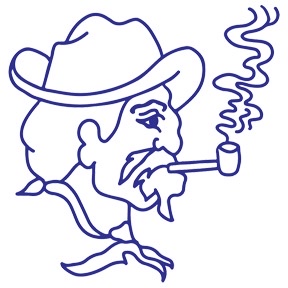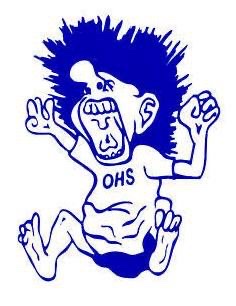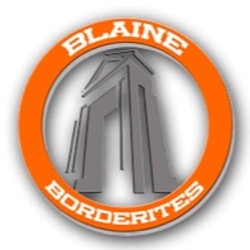Becoming a borderite
26/10/21 01:43
Over the years I have joked a lot about having come from a place of sheepherders. The town of Big Timber, Montana got its name from the Corps and Discovery. Lewis and Clark didn’t both visit the area, having gone north of Big Timber following the Missouri River on the west bound leg of their journey. However the expedition split on the return with Lewis leading a group north to follow the Missouri and explore the Marias while Clark led a group over Homestake Pass and Bozeman Pass to the Yellowstone River, which they followed to the confluence with the Missouri and the reunion with Lewis. It was the Clark portion of the expedition that felled cottonwood trees not far from where I grew up to make dugout canoes withe which they were finally able to travel by river after a long slog overland from the Columbia basin.
After the arrival of the Northern Pacific Railroad, settlers arrived with sheep and pastured their stock in the mountains during the summer, trailing them to the river bottoms in the winter. The town soon became a major shipping center for wool. The original Woolhouse was built by C.T. Busha and Joseph Hooper in 1884 to store wool until it could be shipped. Both men got a city street named in their honor, though Busha’s was later shortened to Bush. The Woolhouse burned in the fire of 1908, but was replaced by a stone building that stood at the end of Main Street when I was a child. That building, however, no longer served as a storage place for wool, which was by then stored in ranches until shipping.
 Big Timber is the home of Sweet Grass County High School, the source of many of my sheepherder jokes. The high school mascot was then, and remains to this day, the Sheepherders. It is depicted by a line drawing of an old man with a scraggly beard in a floppy hat with a kerchief around his neck, smoking a pipe. I attended high school in the 1960’s, when all of our rival teams said about what was smoked in the pipe. The fact that the mascot hasn’t changed with the times still surprises me. Neighboring High Schools with Indian names have changed their mascots. You’d think with the huge rise in awareness of the dangers of smoking the time would have come to at least remove the pipe, but it hasn’t happened. I’m not sure how teachers deal with that pipe. It must get a bit old to say, “If you want to be healthy, don’t be like the sheepherder.”
Big Timber is the home of Sweet Grass County High School, the source of many of my sheepherder jokes. The high school mascot was then, and remains to this day, the Sheepherders. It is depicted by a line drawing of an old man with a scraggly beard in a floppy hat with a kerchief around his neck, smoking a pipe. I attended high school in the 1960’s, when all of our rival teams said about what was smoked in the pipe. The fact that the mascot hasn’t changed with the times still surprises me. Neighboring High Schools with Indian names have changed their mascots. You’d think with the huge rise in awareness of the dangers of smoking the time would have come to at least remove the pipe, but it hasn’t happened. I’m not sure how teachers deal with that pipe. It must get a bit old to say, “If you want to be healthy, don’t be like the sheepherder.”
It is sad that the high school didn’t pay attention to the name shared with the county. Sweetgrass is a medicinal plant, burned as incense and inhaled to cleanse the spirit in traditional Indigenous communities. It is wonderful plant with medicinal values that is carefully harvested and braided. I knew nothing of this as a child or youth and learned it only after I moved away from Sweet Grass County, Montana.
The sheepherder was a kind of negative mascot when I was growing up. Adults would literally point at an old sheepherder and say, “If you don’t study in school and get good grades and go to college, you’ll end up like him.” Sheep ranchers in our town were respected and successful. Sheepherders were seasonal employees who worked only in the summer and often fell into alcohol abuse. We had a joke that we were such a small town that we couldn’t afford a town drunk, everyone had to take their turn. However, in reality, alcohol abuse was a problem for many of our residents, who lived poorly most of the year, barely earning a living and dwelling in substandard housing. They’d live in a sheep wagon and watch the sheep when they were grazing in the high country in the summer, but the rest of the year survived on day labor and lived a pretty grim lifestyle.
 After I became an adult, I discovered a few high schools where the mascot was equally strange to the Sweet Grass County Sheepherders. Orofino Junior-Senior High School on the New Perce Indian Reservation in Idaho is the home of the maniacs. Their mascot is portrayed by a cartoon character with wild hair wearing a night shirt and a mouth open so wide it obscures the other features of its face. The mascot is said to have come from the 1920’s when the school didn’t have funds to provide uniforms for their sports teams. The teams were ridiculed by their opposition. As the story goes, the boys played a very hard game, so hard, that their opponents said they played like “a bunch of maniacs.” That story may be a bit embellished. The fact that Orofino was also home to the the state hospital for the mentally ill meant that there were other meanings, more closely aligned with the stigma attached to those suffering from mental illness and the legacy of poor care offered by state institutions for those whose illnesses were not understood. It is another mascot that I continue to be amazed hasn’t been changed.
After I became an adult, I discovered a few high schools where the mascot was equally strange to the Sweet Grass County Sheepherders. Orofino Junior-Senior High School on the New Perce Indian Reservation in Idaho is the home of the maniacs. Their mascot is portrayed by a cartoon character with wild hair wearing a night shirt and a mouth open so wide it obscures the other features of its face. The mascot is said to have come from the 1920’s when the school didn’t have funds to provide uniforms for their sports teams. The teams were ridiculed by their opposition. As the story goes, the boys played a very hard game, so hard, that their opponents said they played like “a bunch of maniacs.” That story may be a bit embellished. The fact that Orofino was also home to the the state hospital for the mentally ill meant that there were other meanings, more closely aligned with the stigma attached to those suffering from mental illness and the legacy of poor care offered by state institutions for those whose illnesses were not understood. It is another mascot that I continue to be amazed hasn’t been changed.
 Now my life’s journey has taken me to the territory of Blaine High School, where the mascot is the “Borderite.” It is a name applied to those who live on the border between the United States and Canada. The school logo doesn’t depict a person at all, but rather the peace arch that spans the border in the town, a monument to peaceful coexistence between two nations and the strong bonds of family and friendship that span the border. The name “Borderite,” however, doesn’t exactly roll off the tongue. As I write this morning, my spell checker tries to change it to “borderline,” convinced that borderite isn’t a real word.
Now my life’s journey has taken me to the territory of Blaine High School, where the mascot is the “Borderite.” It is a name applied to those who live on the border between the United States and Canada. The school logo doesn’t depict a person at all, but rather the peace arch that spans the border in the town, a monument to peaceful coexistence between two nations and the strong bonds of family and friendship that span the border. The name “Borderite,” however, doesn’t exactly roll off the tongue. As I write this morning, my spell checker tries to change it to “borderline,” convinced that borderite isn’t a real word.
I wasn’t really a sheepherder in my youth. My family’s business was airplanes and the airport and John Deere machinery and the Farm Supply store. I don’t know if I’m really a borderite yet. I guess time will tell. At any rate the journey from Sheepherder to Borderite has been an adventure.
After the arrival of the Northern Pacific Railroad, settlers arrived with sheep and pastured their stock in the mountains during the summer, trailing them to the river bottoms in the winter. The town soon became a major shipping center for wool. The original Woolhouse was built by C.T. Busha and Joseph Hooper in 1884 to store wool until it could be shipped. Both men got a city street named in their honor, though Busha’s was later shortened to Bush. The Woolhouse burned in the fire of 1908, but was replaced by a stone building that stood at the end of Main Street when I was a child. That building, however, no longer served as a storage place for wool, which was by then stored in ranches until shipping.

It is sad that the high school didn’t pay attention to the name shared with the county. Sweetgrass is a medicinal plant, burned as incense and inhaled to cleanse the spirit in traditional Indigenous communities. It is wonderful plant with medicinal values that is carefully harvested and braided. I knew nothing of this as a child or youth and learned it only after I moved away from Sweet Grass County, Montana.
The sheepherder was a kind of negative mascot when I was growing up. Adults would literally point at an old sheepherder and say, “If you don’t study in school and get good grades and go to college, you’ll end up like him.” Sheep ranchers in our town were respected and successful. Sheepherders were seasonal employees who worked only in the summer and often fell into alcohol abuse. We had a joke that we were such a small town that we couldn’t afford a town drunk, everyone had to take their turn. However, in reality, alcohol abuse was a problem for many of our residents, who lived poorly most of the year, barely earning a living and dwelling in substandard housing. They’d live in a sheep wagon and watch the sheep when they were grazing in the high country in the summer, but the rest of the year survived on day labor and lived a pretty grim lifestyle.


I wasn’t really a sheepherder in my youth. My family’s business was airplanes and the airport and John Deere machinery and the Farm Supply store. I don’t know if I’m really a borderite yet. I guess time will tell. At any rate the journey from Sheepherder to Borderite has been an adventure.
